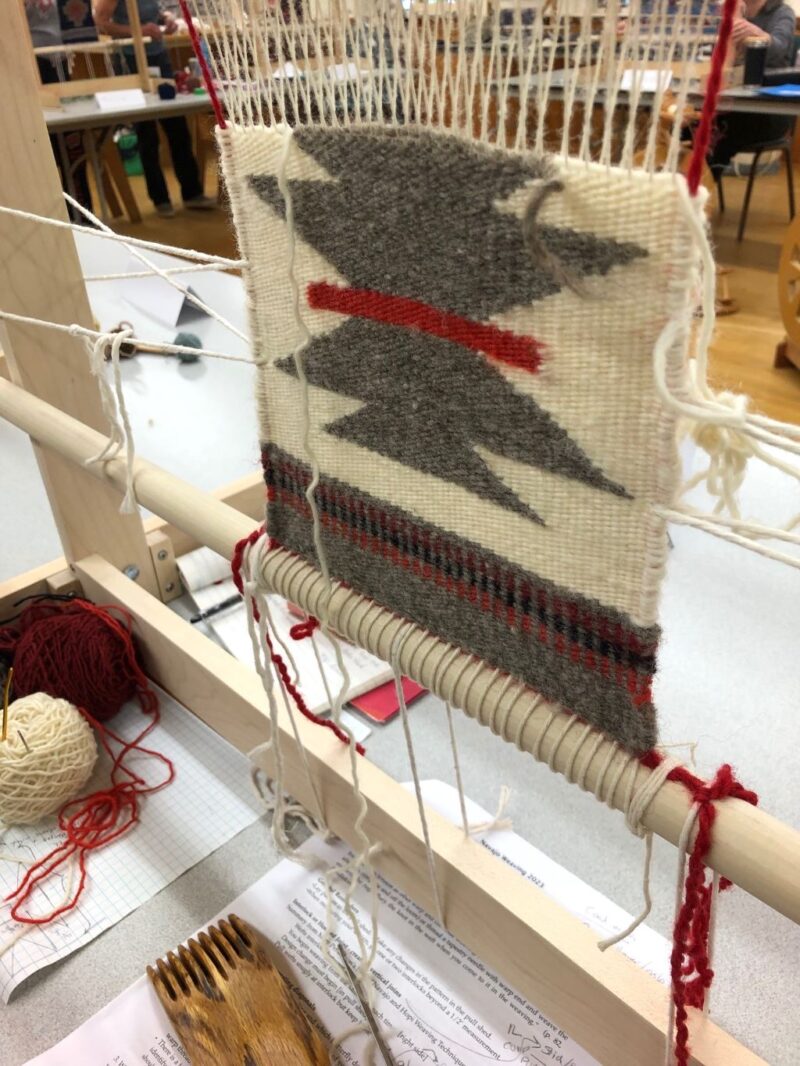
There are many ways of weaving and many types of looms. Last week in one class, upright frame looms were used to teach the ways of Navajo weaving, and in another class, students learned the basics of weaving on a table loom. Although geared for beginners, each class could be used as a refresher, too.
In the Navajo Weaving Techniques class taught by Betty Glynn Carlson, the looms are warped with one continuous warp and authentic Navajo wool yarns are used to create the designs. There are no mechanical parts involved in Navajo weaving, it’s just the wool placed in the warp and tamped down with a comb-type beater in the hands of the weaver.
Betty has offered Navajo weaving classes at Sievers since 2012. She wrote, “My interest in this form of weaving originated in my deep appreciation of the interconnectedness of weaving and spirituality in the Navajo tradition. It may take one month to one year to finish a rug; and in the process of weaving, the wool yarns are woven together with the threads of life. “
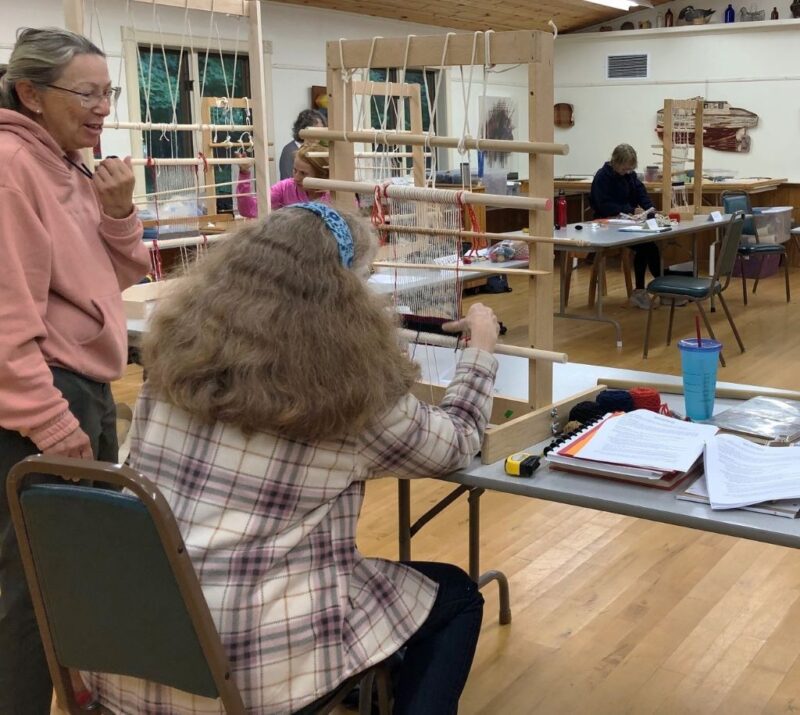
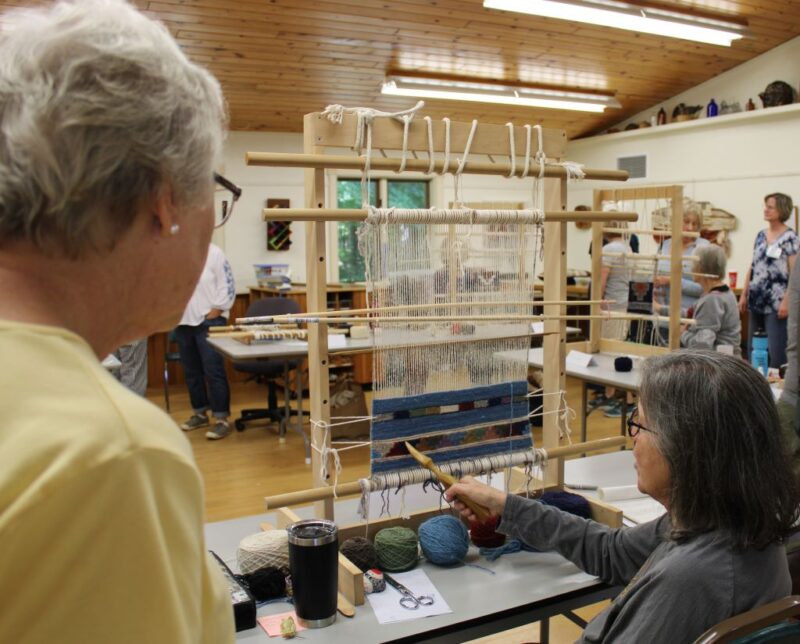
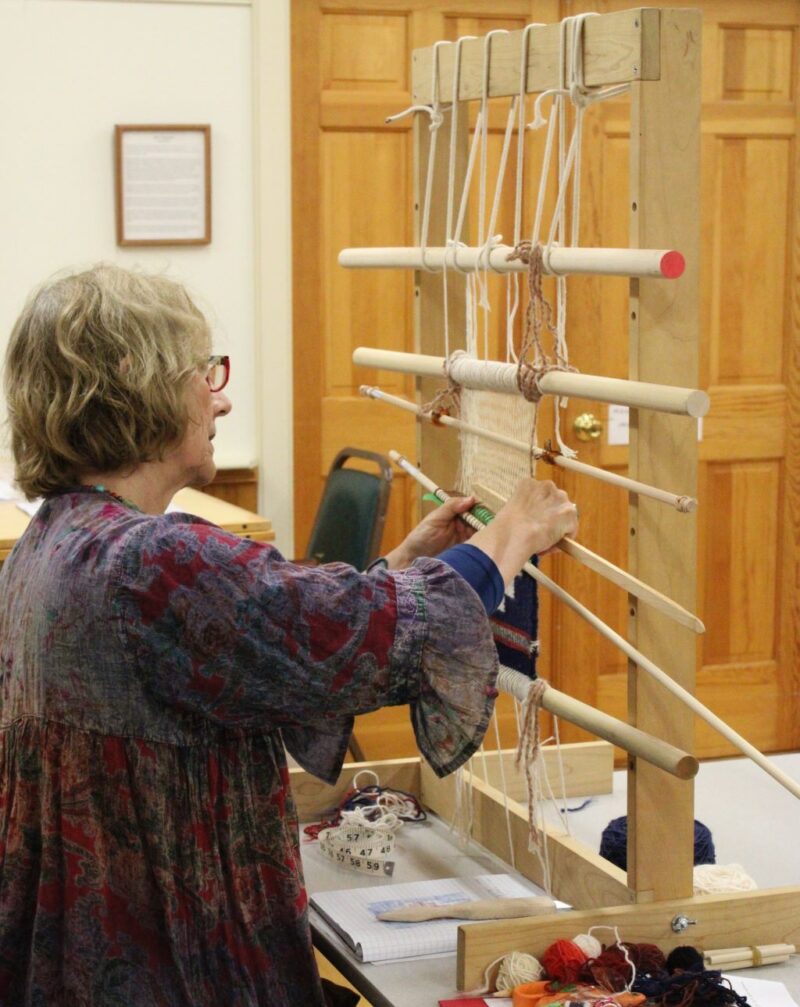
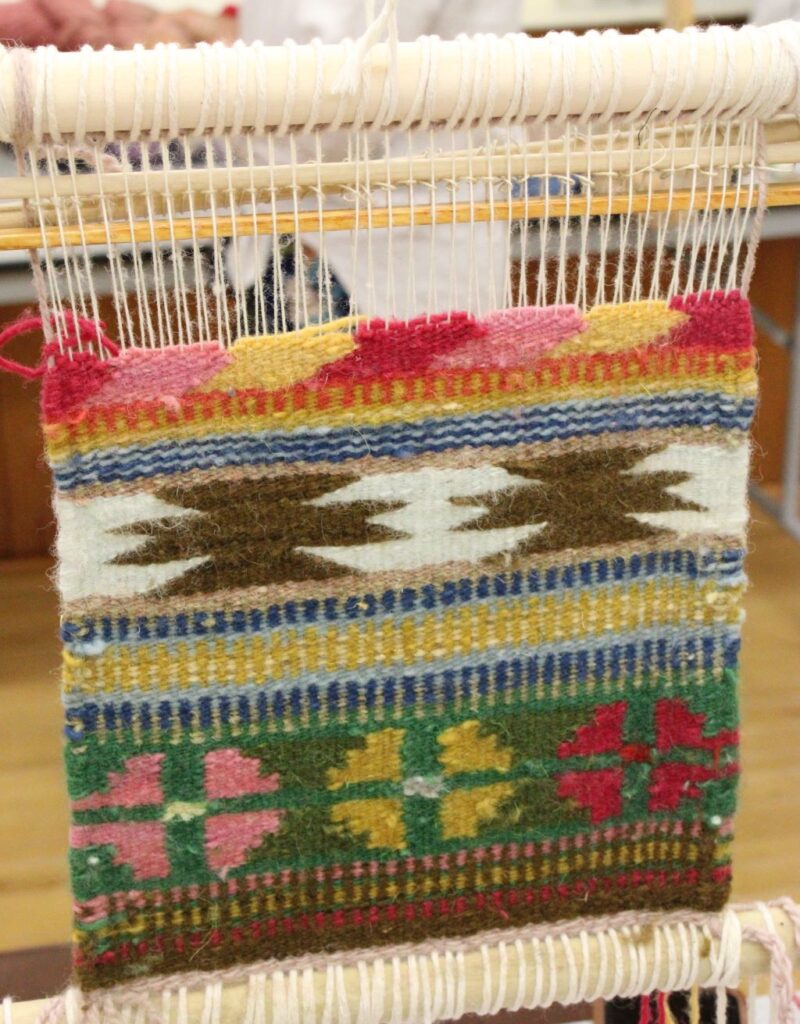
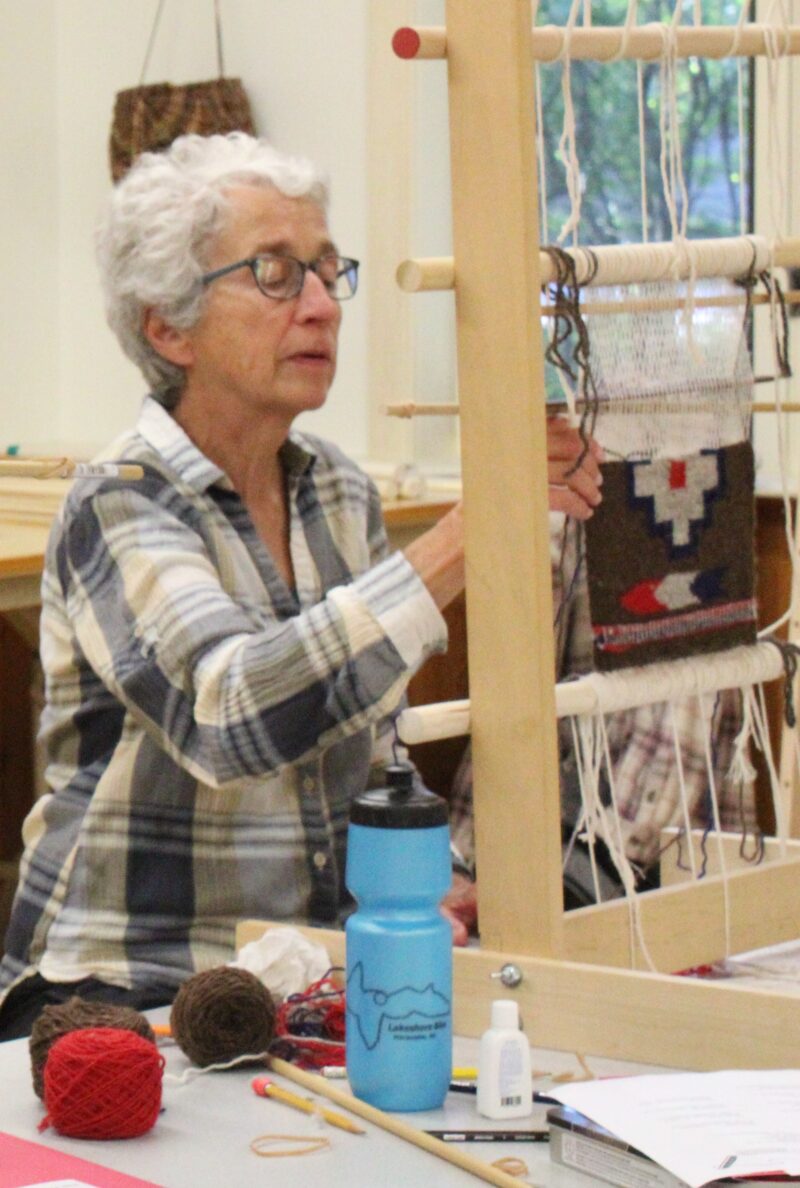
Beginners work on a piece approximately 10″ x 10″ in order to be able to finish their weaving in the five-day class. For returning students bringing a work in progress, it’s always exciting to see the piece get closer to completion during the class.
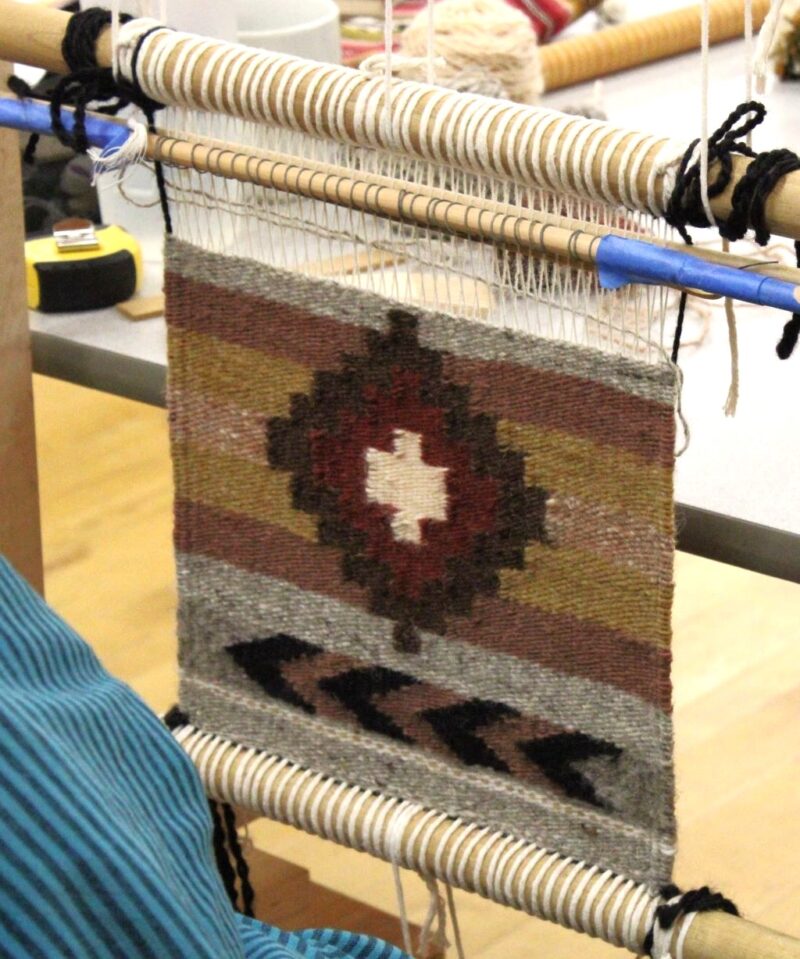
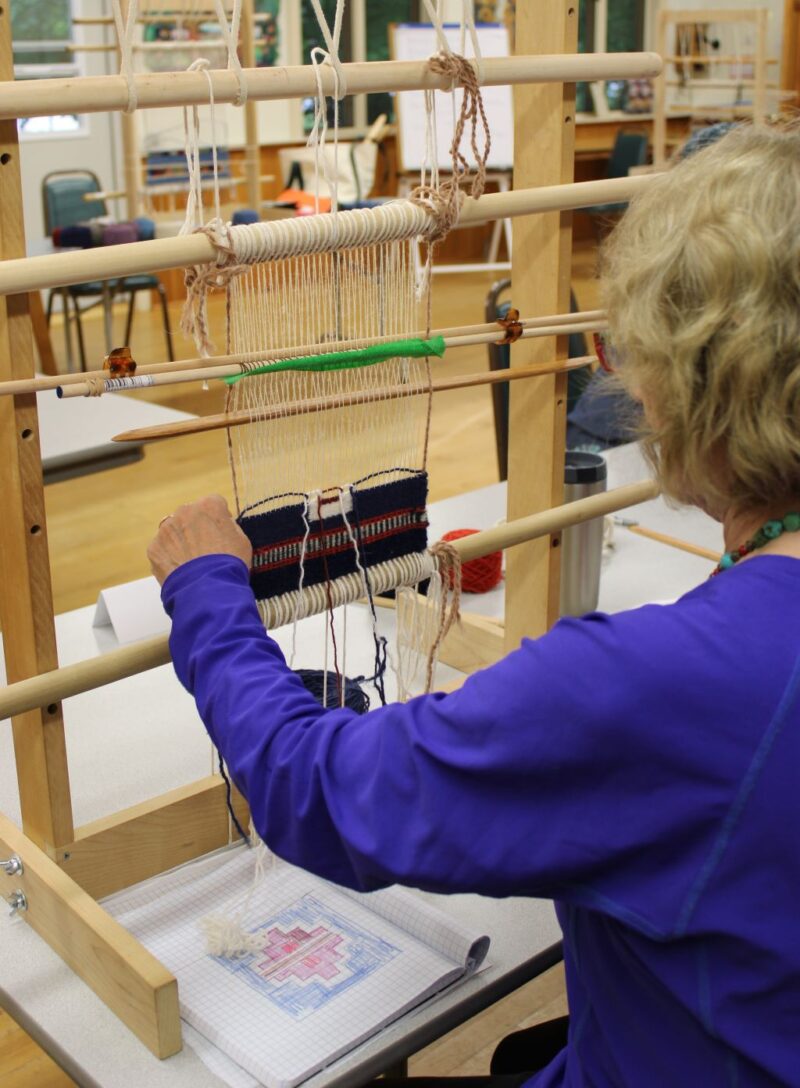
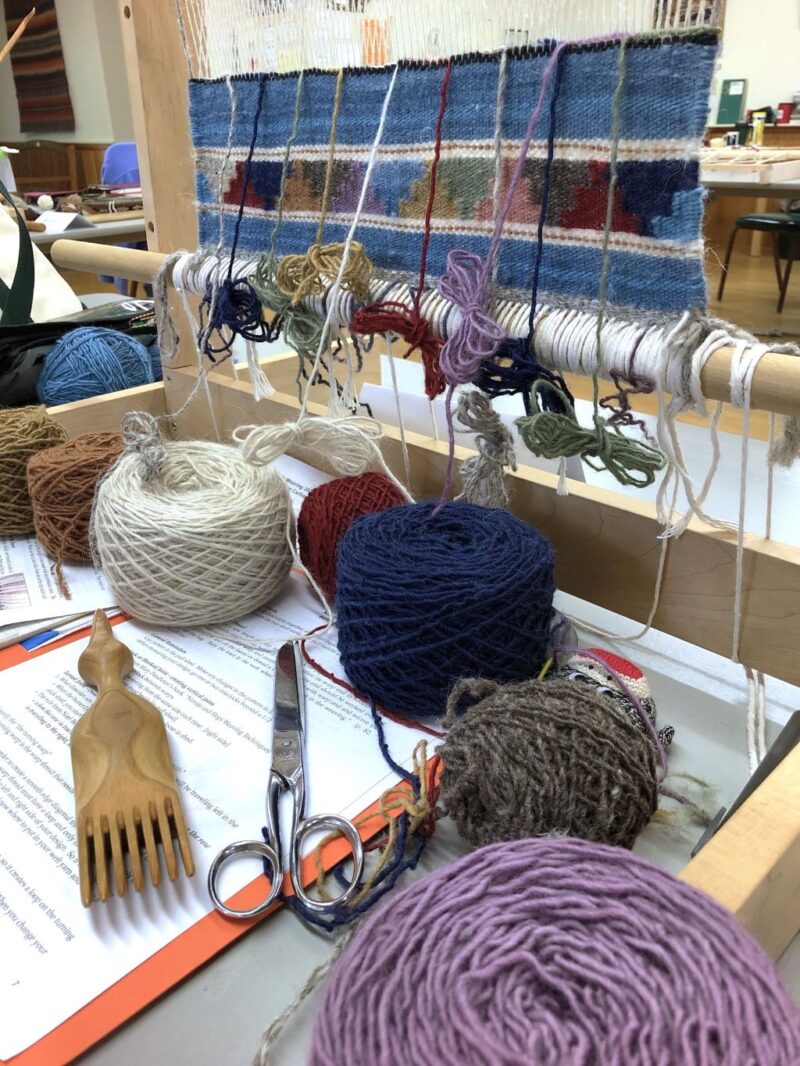
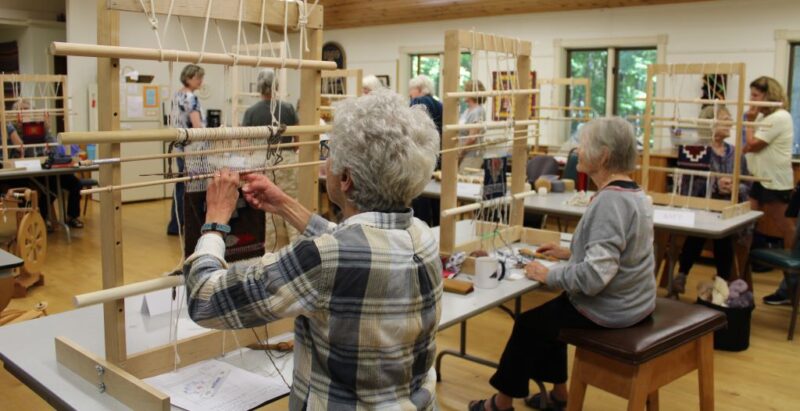
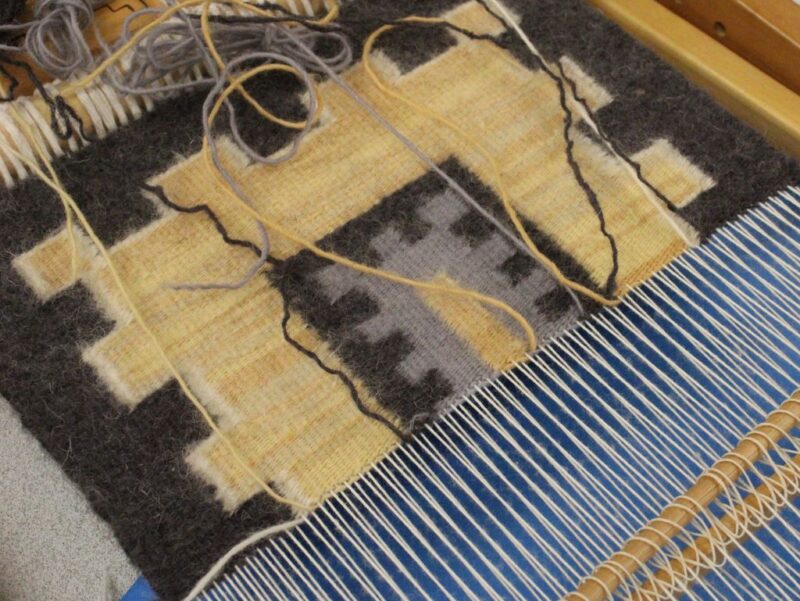
For the Beginning Weaving on a Table Loom class, we have on hand a number of Sievers 15″ Table Looms. These were first available in plan sheet form, advertised in the Fall/Winter 1974-75 issue of McCall’s Needlework & Crafts magazine. The ad, written by Walter Schutz said, “Plans are so simple that 5 of our High School girls made their own looms! Make money, build two, sell one. ” Starting in 1977, Young Brothers built 10 table looms for Sievers, to be sold as kits. The design of the loom now used in class was in place by 1980. Until Sievers discontinued making looms more than 15 years ago, hundreds of these were sold.
With instructor Nancy Frantz, students learn the basics of weaving and complete a simple project in just three days. There are a lot of steps (Nancy’s sheet has 18 basic steps and some have sub-steps) for measuring the warp, preparing and threading the loom, and then weaving.
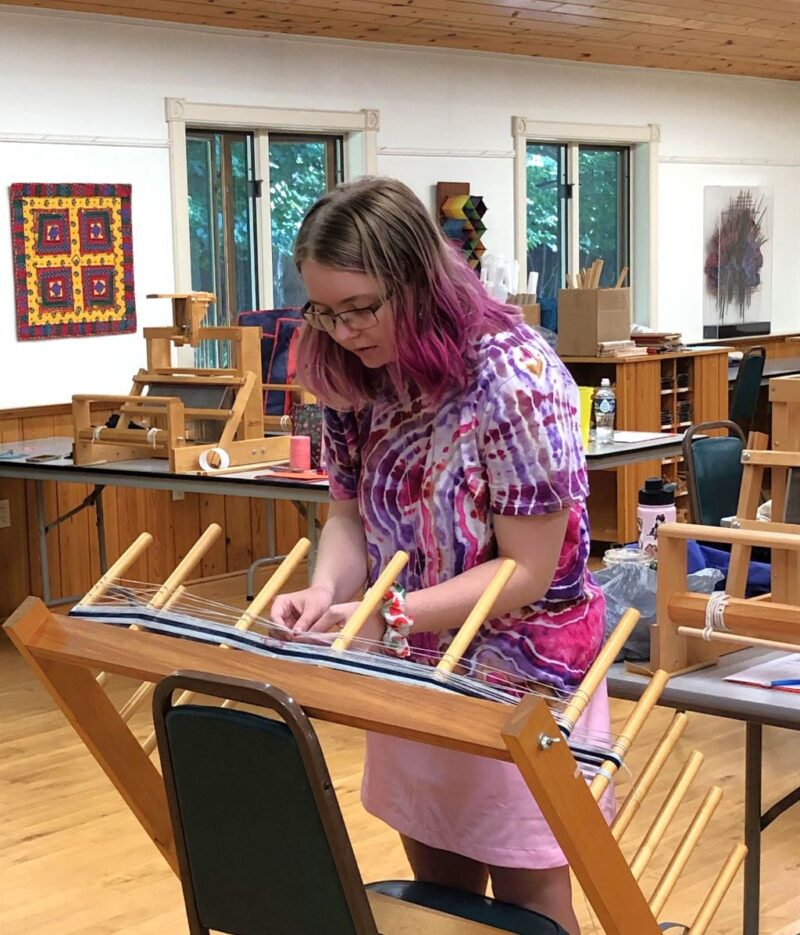
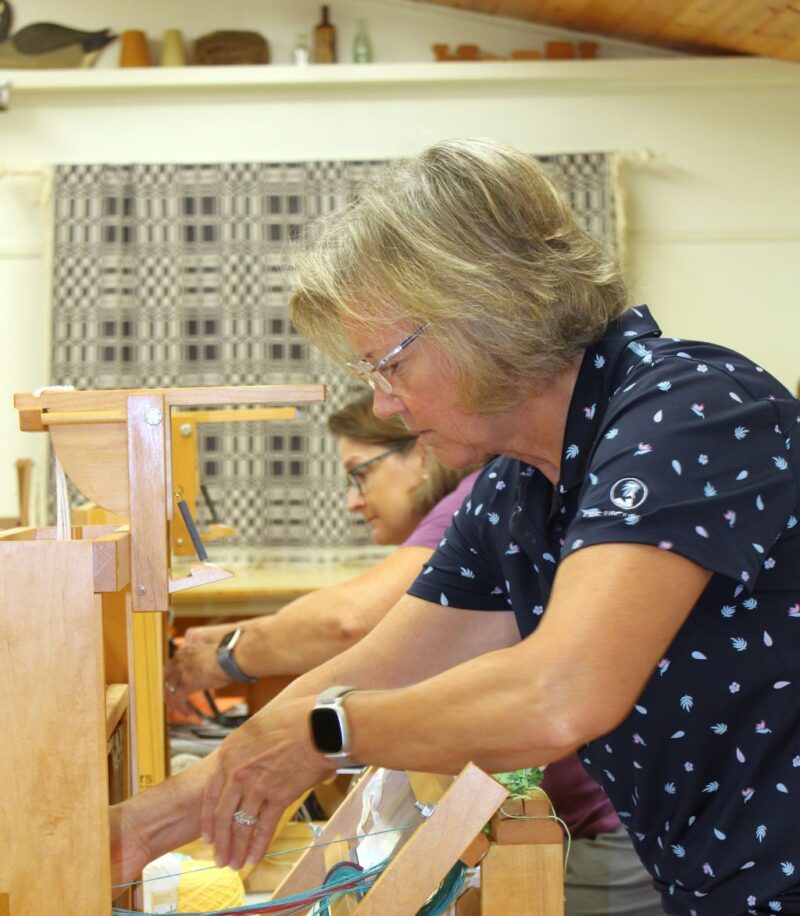
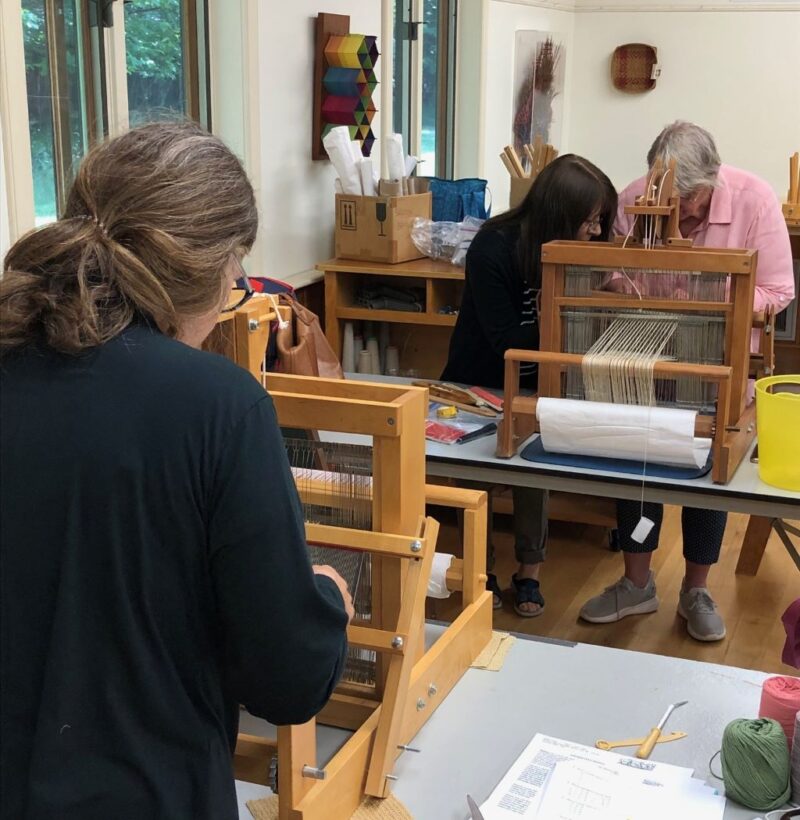
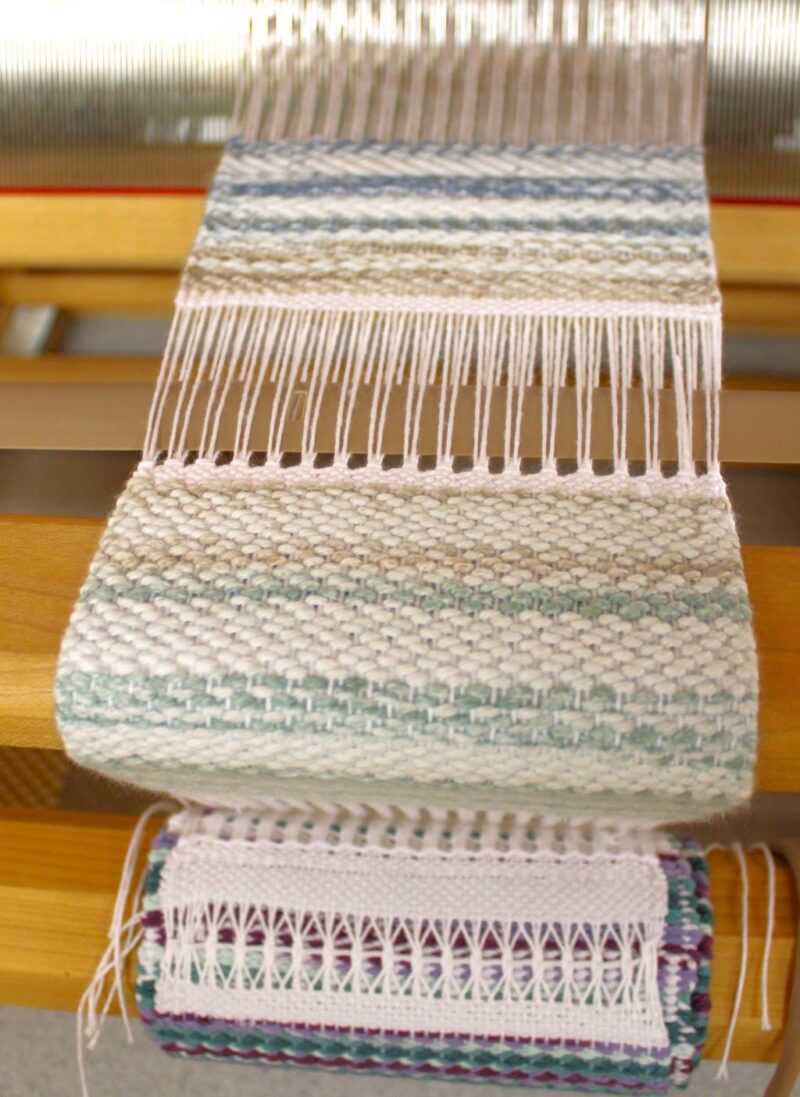
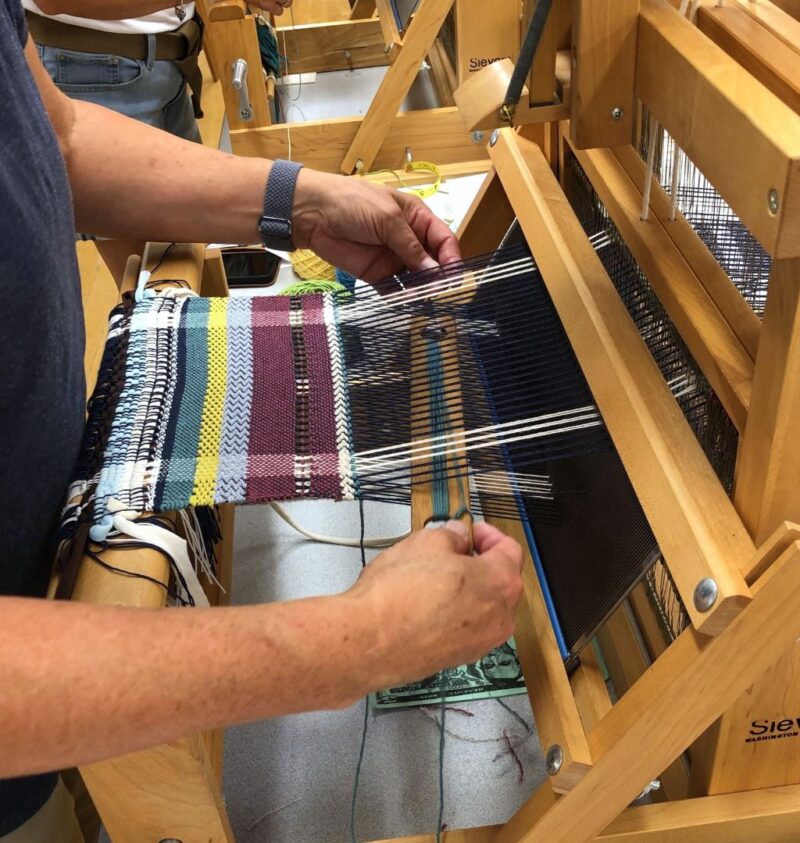
Nancy has been teaching at Sievers since 2004 and in those past twenty years has guided almost 200 students through the weaving process. In each of those classes, students have commented on her patience and first-rate instruction.
Nancy first came to Sievers as a student in 1998 for a weaving class with Jean Hutchison. In her teacher biography, she wrote, “As a teacher, I want to share, inspire and challenge students as well as instill in them a love and appreciation for not only weaving, but other fiber-related techniques.” At each the end of each Sievers class, she encourages students to contine to take classes, whether in weaving or other fiber arts.
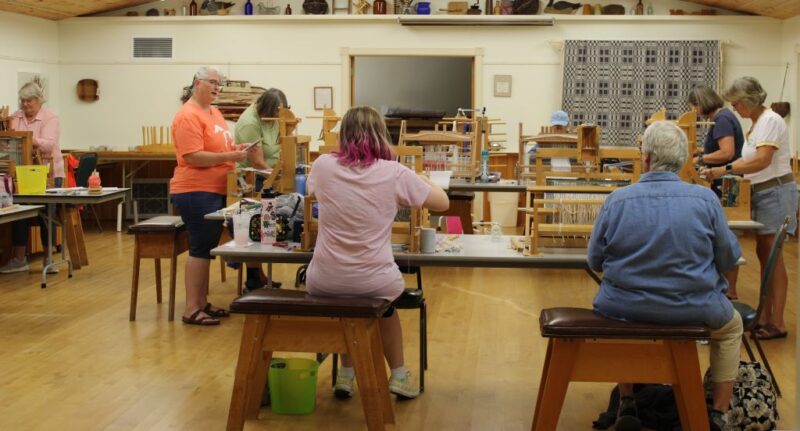
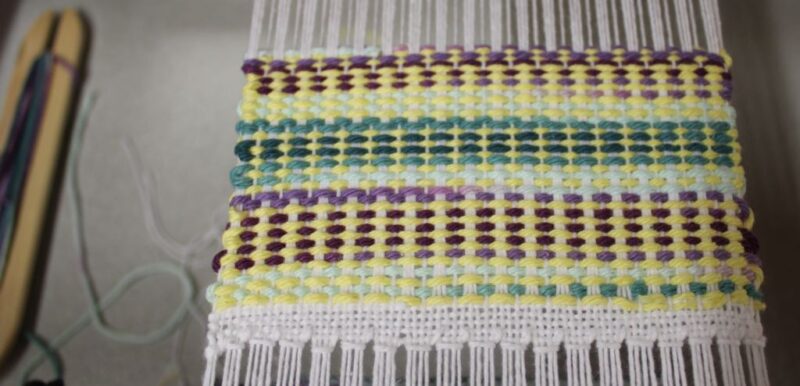
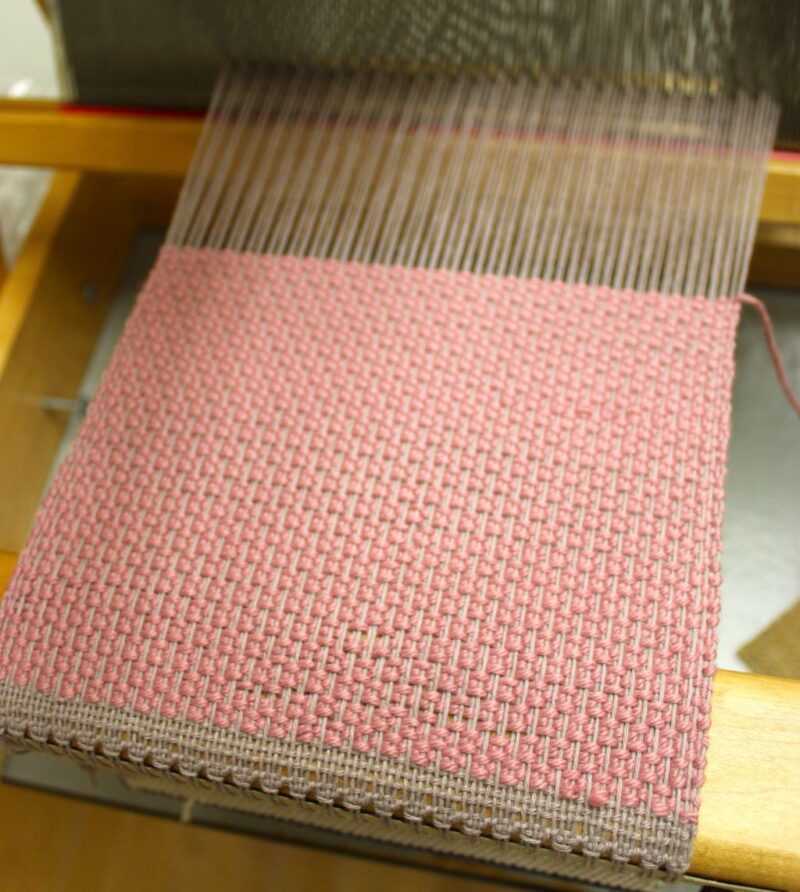
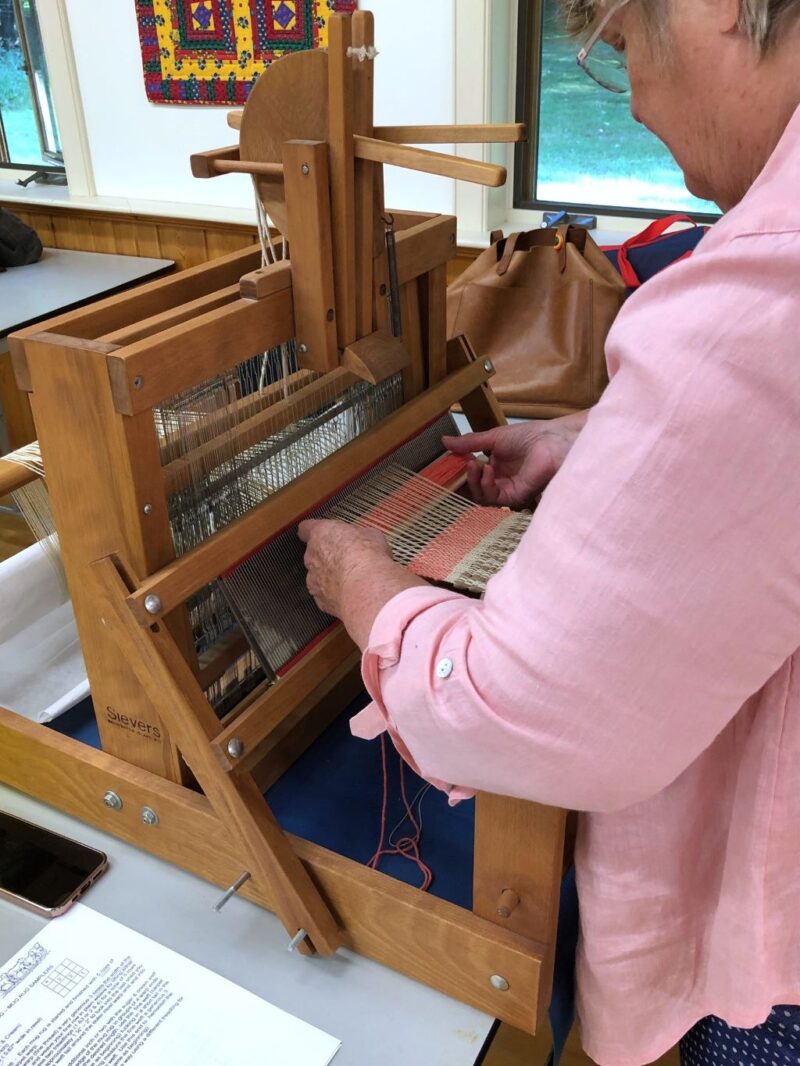
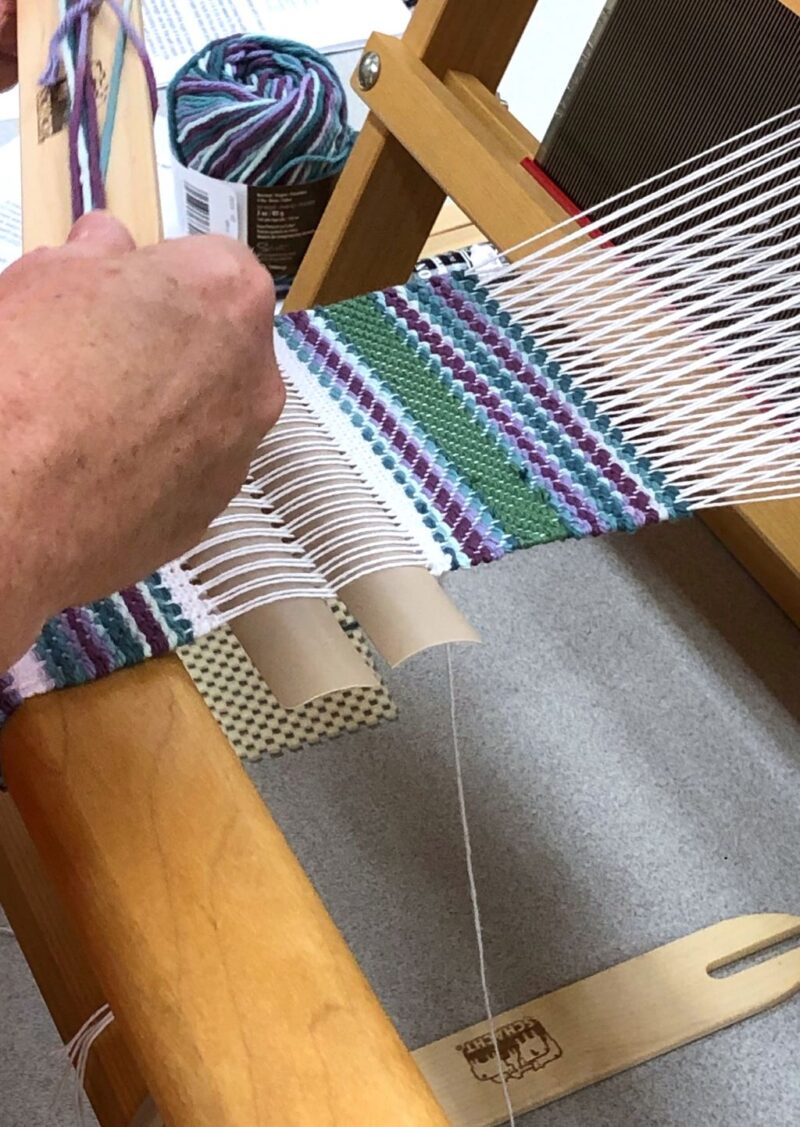
There are many ways of weaving. In their “Learn How to Weave” booklet, Walter and Sophie Schutz wrote, “Weaving is a very personal sort of hobby. Each weaver, over the years gathers his or her own way of doing a certain operation. Do it the way you think best and the way it gives you the most pleasure and satisfaction. More power and joy to you!”

It is so much fun to see the pictures of the weaving classes. They all are doing great work!
Thanks for your comment, Janet! It’s amazing to see the fine weaving that is done, plus to see all a beginner learns in a few short days.
Take care,
Carolyn
Amazing Navajo rug weaving! I took the class once and I know how much work is involved. Great results!
Hi Jayne!
Thanks for the nice words about the Navajo weaving. They really did some great work, and like you said, you know how much is involved. With the smaller size, most people are able to finish their piece by the end of class.
See you very soon!
Carolyn